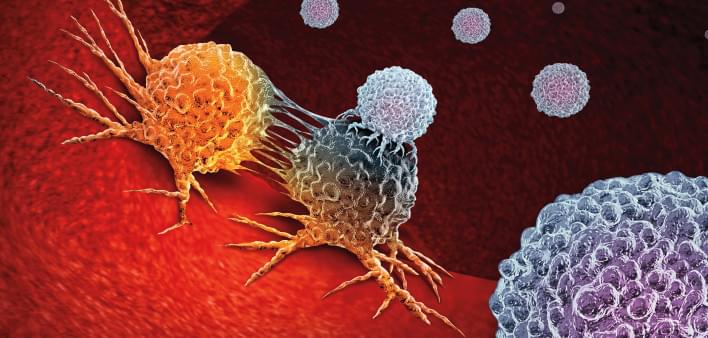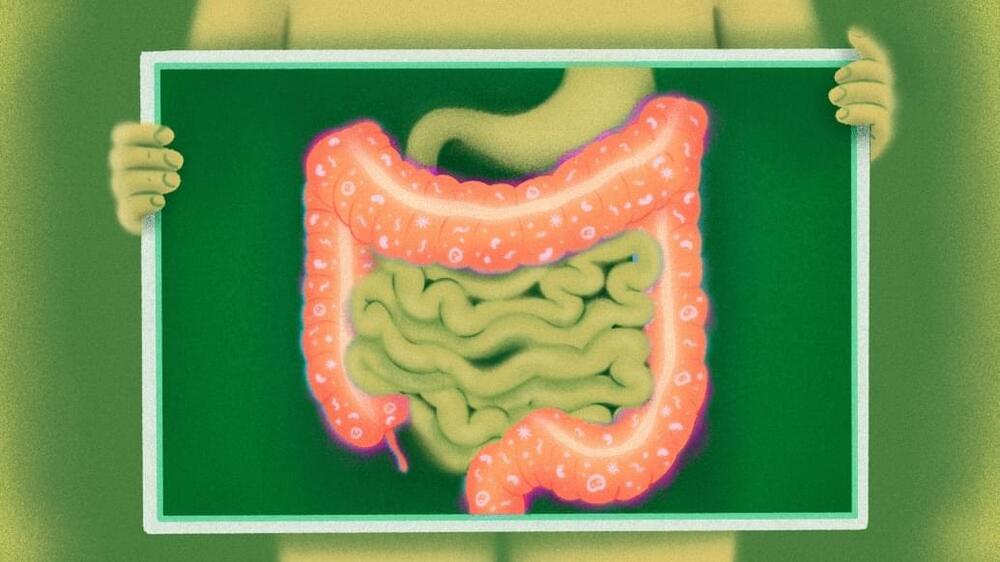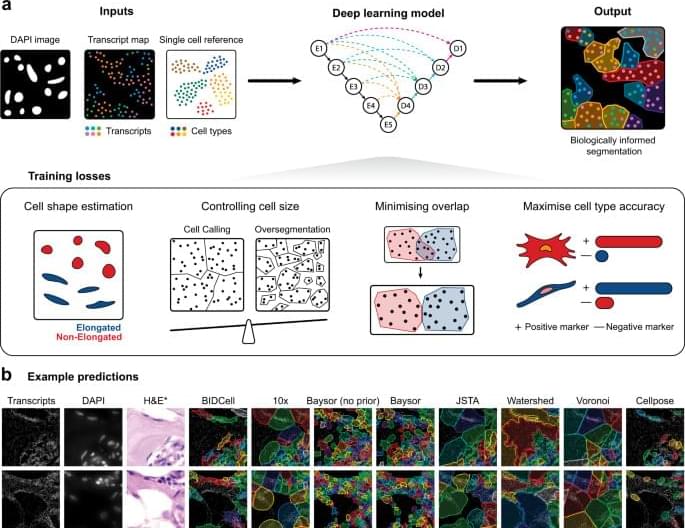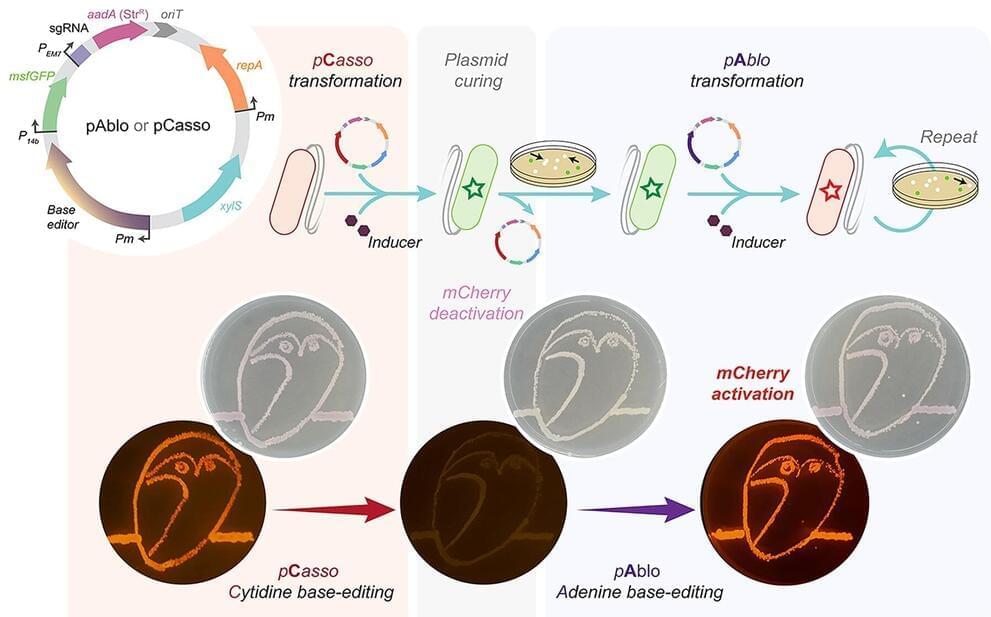CAR-T expert Terry Fry of the University of Colorado Cancer Center talks about new data and future applications for this immunotherapy.



The findings are published in Science.
“This is a good example of how understanding a mechanism helps you to develop an alternative therapy that’s more beneficial. Once we identified the mechanism causing the colitis, we could then develop ways to overcome this problem and prevent colitis while preserving the anti-tumor effect,” said senior study author Gabriel Nunez, M.D., Paul de Kruif Professor of Pathology at Michigan Medicine.
Recent research suggests that a number of neuronal characteristics, traditionally believed to stem from the cell body or soma, may actually originate from processes in the dendrites. This discovery has significant implications for the study of degenerative diseases and for understanding the different states of brain activity during sleep and wakefulness.
The brain is an intricate network comprising billions of neurons. Each neuron’s cell body, or soma, engages in simultaneous communication with thousands of other neurons through its synapses. These synapses act as links, facilitating the exchange of information. Additionally, each neuron receives incoming signals through its dendritic trees, which are highly branched and extend for great lengths, resembling the structure of a complex and vast arboreal network.
For the last 75 years, a core hypothesis of neuroscience has been that the basic computational element of the brain is the neuronal soma, where the long and ramified dendritic trees are only cables that enable them to collect incoming signals from its thousands of connecting neurons. This long-lasting hypothesis has now been called into question.

Finding ways to reduce the invasiveness of brain implants could greatly expand their potential applications. A new device tested in mice that sits on the brain’s surface—but can still read activity deep within—could lead to safer and more effective ways to read neural activity.
There are already a variety of technologies that allow us to peer into the inner workings of the brain, but they all come with limitations. Minimally invasive approaches include functional MRI, where an MRI scanner is used to image changes of blood flow in the brain, and EEG, where electrodes placed on the scalp are used to pick up the brain’s electrical signals.
The former requires the patient to sit in an MRI machine though, and the latter is too imprecise for most applications. The gold standard approach involves inserting electrodes deep into brain tissue to obtain the highest quality readouts. But this requires a risky surgical procedure, and scarring and the inevitable shifting of the electrodes can lead to the signal degrading over time.

Thirdly, more recent approaches have begun to leverage deep learning (DL) methods. DL models such as U-Net12 have provided solutions for many image analysis challenges. However, they require ground truth to be generated for training. DL-based methods for SST cell segmentation include GeneSegNet13 and SCS14, though supervision is still required in the form of initial cell labels or based on hard-coded rules. Further limitations of existing methods encountered during our benchmarking, such as lengthy code runtimes, are included in Supplementary Table 1. The self-supervised learning (SSL) paradigm can provide a solution to overcome the requirement of annotations. While SSL-based methods have shown promise for other imaging modalities15,16, direct application to SST images remains challenging. SST data are considerably different from other cellular imaging modalities and natural images (e.g., regular RGB images), as they typically contain hundreds of channels, and there is a lack of clear visual cues that indicate cell boundaries. This creates new challenges such as (i) accurately delineating cohesive masks for cells in densely-packed regions, (ii) handling high sparsity within gene channels, and (iii) addressing the lack of contrast for cell instances.
While these morphological and DL-based approaches have shown promise, they have not fully exploited the high-dimensional expression information contained within SST data. It has become increasingly clear that relying solely on imaging information may not be sufficient to accurately segment cells. There is growing interest in leveraging large, well-annotated scRNA-seq datasets17, as exemplified by JSTA18, which proposed a joint cell segmentation and cell type annotation strategy. While much of the literature has emphasised the importance of accounting for biological information such as transcriptional composition, cell type, and cell morphology, the impact of incorporating such information into segmentation approaches remains to be fully understood.
Here, we present a biologically-informed deep learning-based cell segmentation (BIDCell) framework (Fig. 1 a), that addresses the challenges of cell body segmentation in SST images through key innovations in the framework and learning strategies. We introduce (a) biologically-informed loss functions with multiple synergistic components; and (b) explicitly incorporate prior knowledge from single-cell sequencing data to enable the estimation of different cell shapes. The combination of our losses and use of existing scRNA-seq data in supplement to subcellular imaging data improves performance, and BIDCell is generalisable across different SST platforms. Along with the development of our segmentation method, we created a comprehensive evaluation framework for cell segmentation, CellSPA, that assesses five complementary categories of criteria for identifying the optimal segmentation strategies. This framework aims to promote the adoption of new segmentation methods for novel biotechnological data.

A new CRISPR-Cas toolkit, dubbed “pAblo·pCasso,” is set to transform the landscape of bacterial genome editing, offering unprecedented precision and flexibility in genetic engineering. The new technology, developed by researchers at The Novo Nordisk Foundation Center for Biosustainability (DTU Biosustain), expands the range of genome sites available for base-editing and dramatically accelerates the development of bacteria for a wide range of bioproduction applications.
PAblo·pCasso sets a new standard in CRISPR-Cas technologies. A key innovation is to enable precise and reversible DNA edits within Gram-negative bacteria, a feat not achievable with previous CRISPR systems. The toolkit utilizes specialized fusion enzymes, modified Cas9 coupled with editor modules CBE or ABE, which act like molecular pencils to alter specific DNA nucleotides, thus accurately controlling gene function.
The development of pAblo·pCasso involved overcoming significant challenges. Traditional CRISPR-Cas systems were limited by their need for specific DNA sequences (PAM sequences) near the target site and were less effective in making precise, single-nucleotide changes. pAblo·pCasso transcends these limitations by incorporating advanced Cas-fusion variants that do not require specific PAM sequences, thereby expanding the range of possible genomic editing sites.

Given the value of the vaccine, it’s mindboggling that some in the US would choose not to protect their children. And yet, vaccine rates among US kindergartners fell for the second consecutive year in 2022, a situation the Centers for Disease Control and Prevention said left some 250,000 kids vulnerable to measles. While some of those missed shots were potentially due to challenges accessing timely health care during the pandemic, there’s reason to worry that growing hesitancy about vaccination is also at play.
It does not help that some states are making it easier to forgo routine childhood vaccines. Mississippi, for example, previously led the nation in vaccination coverage for kindergarteners, with more than 98.6% of kids receiving both doses of their MMR shots in the 2021–2022 school year. But anti-vaccine activists succeeded in loosening the state’s childhood vaccination policy, and last year families could for the first time seek religious exemptions for basic shots like MMR, tetanus, polio and others. According to a report from NBC, the state granted more than 2,200 exemptions in the first five months they were allowed.
The shift seemingly reflects a new partisan divide. A recent Pew Research Center poll found a steep drop in the number of Republicans and people who lean Republican who don’t believe vaccines should be required for attending public school.
In the vast realm of scientific discovery and technological advancement, there exists a hidden frontier that holds the key to unlocking the mysteries of the universe. This frontier is Pico Technology, a domain of measurement and manipulation at the atomic and subatomic levels. The rise of Pico Technology represents a seismic shift in our understanding of precision measurement and its applications across diverse fields, from biology to quantum computing. Pico Technology, at the intersection of precision measurement and quantum effects, represents the forefront of scientific and technological progress, unveiling the remarkable capabilities of working at the picoscale, offering unprecedented precision and reactivity that are reshaping fields ranging from medicine to green energy.
Unlocking the Picoscale World
At the heart of Pico Technology lies the ability to work at the picoscale, a dimension where a picometer, often represented as 1 × 10^−12 meters, reigns supreme. The term ‘pico’ itself is derived from the Greek word ‘pikos’, meaning ‘very small’. What sets Pico Technology apart is not just its capacity to delve deeper into smaller scales, but its unique ability to harness the inherent physical, chemical, mechanical, and optical properties of materials that naturally manifest at the picoscale.

